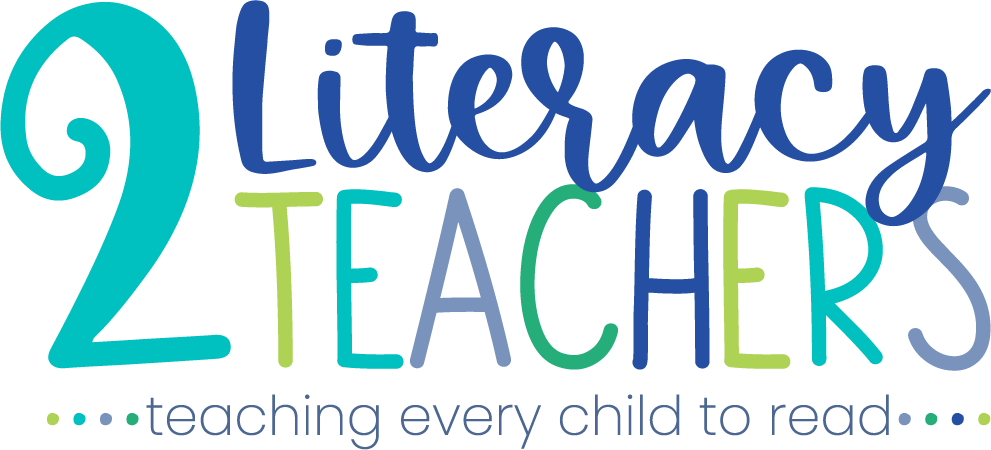
Through The Eyes of a Struggling
Reader
Reader
Teacher, help me…
I don’t know that word.
I don’t know what sound that says.
I don’t know what that word means.
I don’t know what the story said.
I don’t know how the character feels.
I don’t know what the story means.
I don’t know what I’m thinking….or how to tell you.
I don’t know how to be a good reader.
Teacher, help me. I am counting on you.
In this series of blogposts we have shared ideas for your students
in Tier 1, (here) and in Tier 2, (here). In this final
post of the series, we’d like to share ideas for Tier 3 students, those that
are one or more years below grade level standards.. Tier 3 students struggle for many reasons,
but the most prevalent are: ELL
newcomers, lack of literacy in the home, attending many schools over the years,
and suspected learning disabilities. No
matter the reason, it is important for us to do all we can to catch these
students up. Their futures quite
literally depend upon it. So, what do we
do?
in Tier 1, (here) and in Tier 2, (here). In this final
post of the series, we’d like to share ideas for Tier 3 students, those that
are one or more years below grade level standards.. Tier 3 students struggle for many reasons,
but the most prevalent are: ELL
newcomers, lack of literacy in the home, attending many schools over the years,
and suspected learning disabilities. No
matter the reason, it is important for us to do all we can to catch these
students up. Their futures quite
literally depend upon it. So, what do we
do?
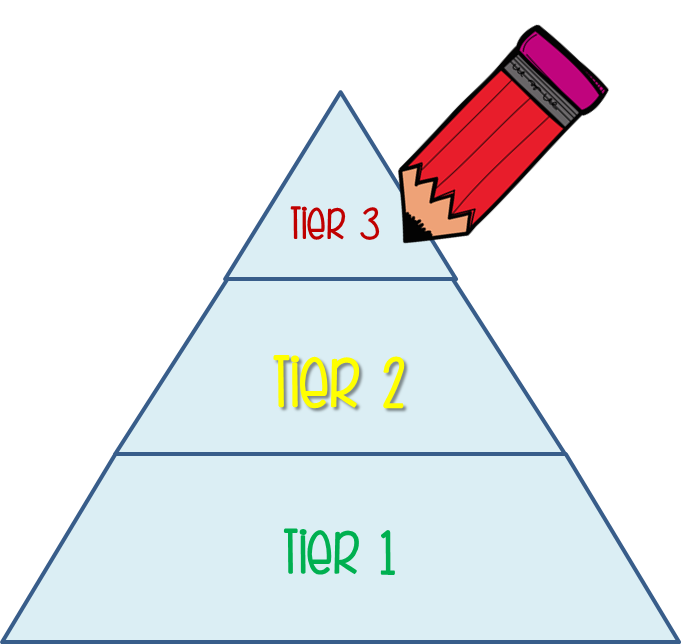
The 5 Necessities
To help Tier 3 students catch up as quickly as possible, these
five things must be in place.
five things must be in place.
1. Whole class instruction that is differentiated and scaffolded so
Tier 3 students can access the learning target.
Tier 3 students can access the learning target.
2.
Daily small group guided reading that is at the student’s instructional
level.
Daily small group guided reading that is at the student’s instructional
level.
3.
Individualized instruction that is focused on the one thing that
will move the student forward as quickly as possible.
Individualized instruction that is focused on the one thing that
will move the student forward as quickly as possible.
4.
Hours and hours of independent level “high success” reading
practice.
Hours and hours of independent level “high success” reading
practice.
5.
Any special needs met and addressed.
Any special needs met and addressed.
Let’s go through these one at a time.
1. Whole class instruction that is differentiated and
scaffolded, so that your Tier 3 students can access the learning target, is the
first layer of teaching. When we say
differentiated, we specifically mean that the reading level of the materials
being used in the lesson, must be at a student’s instructional level. This includes not only texts, but anchor
charts and other visual materials as well.
You can differentiate your texts by choosing those that are already
leveled. The one-size fits all text just
doesn’t cut it for your Tier 2 and Tier 3 students, and if used means that much
of the lesson will go over their heads.
That’s why it is essential to have instructional leveled texts for all
of your students.
scaffolded, so that your Tier 3 students can access the learning target, is the
first layer of teaching. When we say
differentiated, we specifically mean that the reading level of the materials
being used in the lesson, must be at a student’s instructional level. This includes not only texts, but anchor
charts and other visual materials as well.
You can differentiate your texts by choosing those that are already
leveled. The one-size fits all text just
doesn’t cut it for your Tier 2 and Tier 3 students, and if used means that much
of the lesson will go over their heads.
That’s why it is essential to have instructional leveled texts for all
of your students.
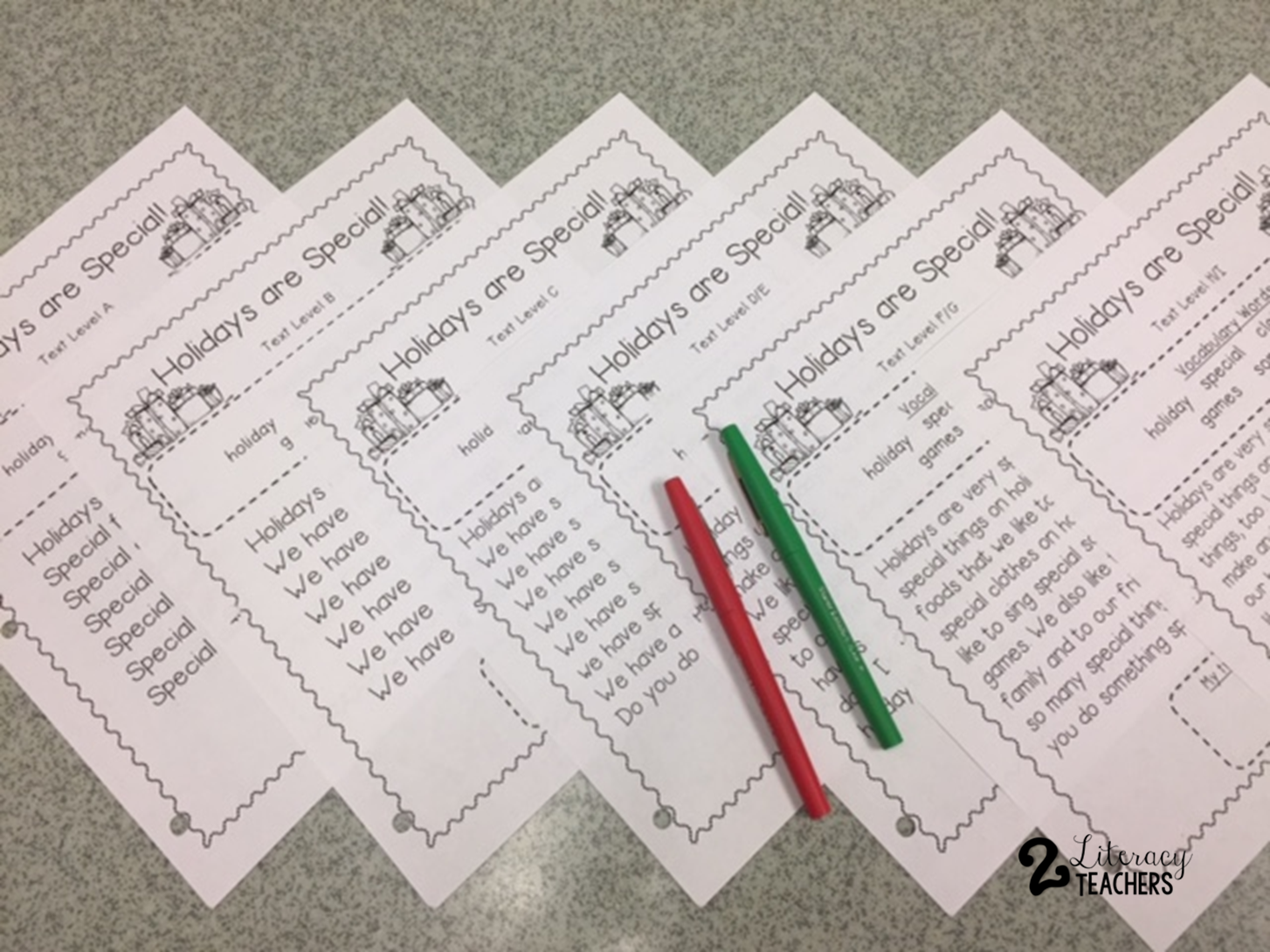
The same is true for your anchor charts. Anchor charts that are full of text only, are
not easily accessible for your students that struggle. Adding picture clues and icons to the text,
will make them more accessible to your struggling students and will turn them
into a useful resource tool for them.
Without the pictures, they will not be accessible to your struggling
students, who really need the anchor charts more so than your non-struggling
students.
not easily accessible for your students that struggle. Adding picture clues and icons to the text,
will make them more accessible to your struggling students and will turn them
into a useful resource tool for them.
Without the pictures, they will not be accessible to your struggling
students, who really need the anchor charts more so than your non-struggling
students.
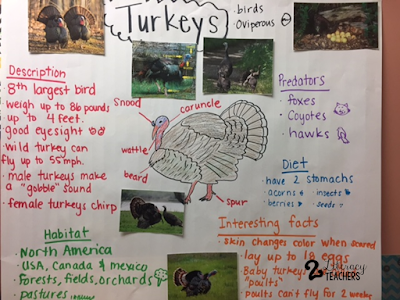
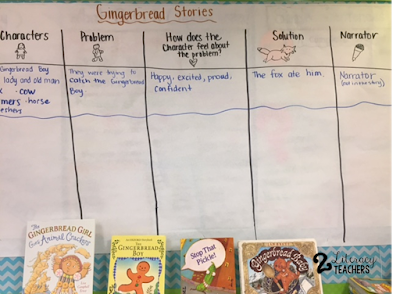
Differentiating your instruction also means that you are
teaching the vocabulary that you will use in your lesson. A great way to teach vocabulary, is to act it
out…or in ELL terms….TPR. This means
having students repeat the word and its meaning several times, while using an
action at the same time. For example, at our school we do this for plot – We
say: “Plot – All of the events in the story.” We do these actions while saying
that….Make a fist and put up one finger after another as if counting on your
fingers (this represents the first, second, third events and so on), then put
palms together and open them as if opening a book (which represents the
story). TPR makes vocabulary accessible
and memorable for all of your students…not just your ELL students, and is a great
way to scaffold vocabulary learning.
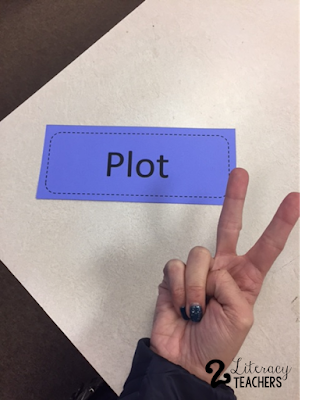
teaching the vocabulary that you will use in your lesson. A great way to teach vocabulary, is to act it
out…or in ELL terms….TPR. This means
having students repeat the word and its meaning several times, while using an
action at the same time. For example, at our school we do this for plot – We
say: “Plot – All of the events in the story.” We do these actions while saying
that….Make a fist and put up one finger after another as if counting on your
fingers (this represents the first, second, third events and so on), then put
palms together and open them as if opening a book (which represents the
story). TPR makes vocabulary accessible
and memorable for all of your students…not just your ELL students, and is a great
way to scaffold vocabulary learning.

2. Daily small group guided reading. Most teachers are familiar with how to do
guided reading, but there are some things to keep in mind with Tier 3 students.
It is important for your Tier 3 students to receive guided reading every
day. It is also important that the
strategies and lessons taught and reinforced in guided reading group, come
directly from what your assessments have shown that each child needs. General
learning targets are not as effective with Tier 3 students, as those that come
directly from each child’s assessment.
That is why it is also important that your groups are formed around like
needs.
guided reading, but there are some things to keep in mind with Tier 3 students.
It is important for your Tier 3 students to receive guided reading every
day. It is also important that the
strategies and lessons taught and reinforced in guided reading group, come
directly from what your assessments have shown that each child needs. General
learning targets are not as effective with Tier 3 students, as those that come
directly from each child’s assessment.
That is why it is also important that your groups are formed around like
needs.
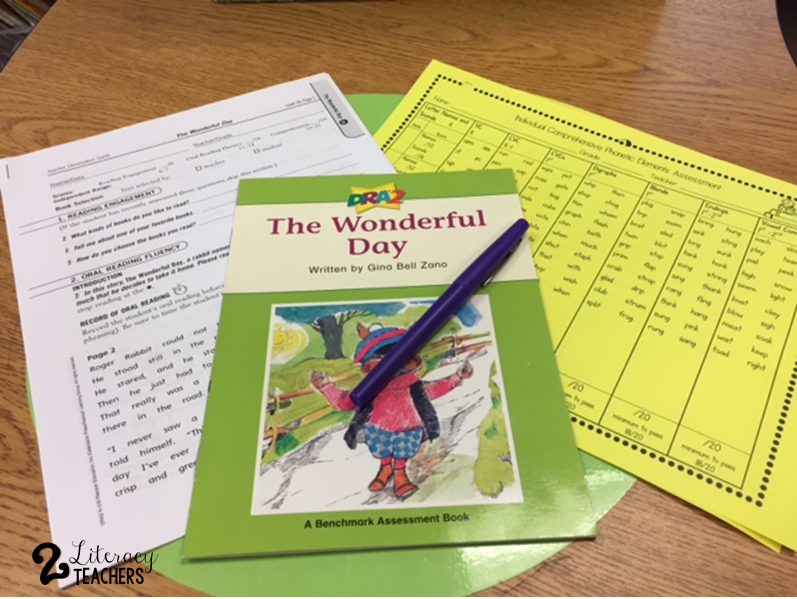
3. Individualized instruction for the one, “next big thing” that
the child needs to move forward in his or her reading, is very important with
Tier 3 readers. This is in addition
to whole class instruction
and guided reading group. The focus may
be blending and decoding with a phonetic element that the student is having
difficulty with. Another focus of
instruction may be the ability to recall and retell the story events in
order. Or it may be reading in phrases
so that the story will make sense and so the child’s comprehension will increase. One way to provide this is for you to teach
the strategy to the student during your conferring conference (our school does
this during independent reading time for example), then to have a paraeducator,
parent volunteer, or older grade student helper provide coached practice with
the student.

the child needs to move forward in his or her reading, is very important with
Tier 3 readers. This is in addition
to whole class instruction
and guided reading group. The focus may
be blending and decoding with a phonetic element that the student is having
difficulty with. Another focus of
instruction may be the ability to recall and retell the story events in
order. Or it may be reading in phrases
so that the story will make sense and so the child’s comprehension will increase. One way to provide this is for you to teach
the strategy to the student during your conferring conference (our school does
this during independent reading time for example), then to have a paraeducator,
parent volunteer, or older grade student helper provide coached practice with
the student.

.
4. Hours and hours of independent “high success” reading
practice. Richard Allington* describes
“high success” reading materials as those that the student can read with 98%
accuracy or higher. He talks about how
struggling students get far less practice than non-struggling students in
class, because they simply cannot read most of the materials provided. Not only
do struggling students need as much practice as non-struggling students…they
need hours and hours more, if they are to catch up. That reading, according to Allington, must be
high success reading to be effective. Take a look around your room. How much of what is available, is actually
high success materials for your struggling students? Don’t forget to check the anchor charts and
displays. Just something to reflect
upon.
practice. Richard Allington* describes
“high success” reading materials as those that the student can read with 98%
accuracy or higher. He talks about how
struggling students get far less practice than non-struggling students in
class, because they simply cannot read most of the materials provided. Not only
do struggling students need as much practice as non-struggling students…they
need hours and hours more, if they are to catch up. That reading, according to Allington, must be
high success reading to be effective. Take a look around your room. How much of what is available, is actually
high success materials for your struggling students? Don’t forget to check the anchor charts and
displays. Just something to reflect
upon.
*For more information see:
”What Really Matters for Struggling Readers: Designing
Research-Based Programs” and “What Really Matters in Response To Intervention:
Research-Based Designs” by Richard L. Allington
Research-Based Programs” and “What Really Matters in Response To Intervention:
Research-Based Designs” by Richard L. Allington
???
5. Special needs must be
addressed. Some of your struggling
students may be showing signs of other things that may be impacting their
learning. Attention and focus difficulties
are common barriers for learning effectively.
So are memory storage and retrieval difficulties. Students with this type of difficulty often
learn something one day or even on one page, then forget it on the next. Struggling with letters/sounds/words, how
they are put together and taken apart and keeping the order of the sounds in a
word straight, is also an indicator that something else is going on that is
impacting learning. If your students are
showing any signs of these types of things, it is important to discuss them
with the school psychologist, nurse, Special Ed. teachers, and any other
pertinent staff member, to see what the best steps forward will be for that
child. Tier 3 students are sometimes
students that would qualify for, and benefit from, Special Education
services. It is best to check it out
with your specialists to be sure.
addressed. Some of your struggling
students may be showing signs of other things that may be impacting their
learning. Attention and focus difficulties
are common barriers for learning effectively.
So are memory storage and retrieval difficulties. Students with this type of difficulty often
learn something one day or even on one page, then forget it on the next. Struggling with letters/sounds/words, how
they are put together and taken apart and keeping the order of the sounds in a
word straight, is also an indicator that something else is going on that is
impacting learning. If your students are
showing any signs of these types of things, it is important to discuss them
with the school psychologist, nurse, Special Ed. teachers, and any other
pertinent staff member, to see what the best steps forward will be for that
child. Tier 3 students are sometimes
students that would qualify for, and benefit from, Special Education
services. It is best to check it out
with your specialists to be sure.
VERY IMPORTANT – Document ALL Tier 3 interventions and progress every week. You will need this to determine if interventions are working, and should further testing be needed for Special Education.
Tier 3 students are terribly in need of your help. They are counting on you to help them move
forward in their learning each day. It
is no less than a daunting task for us, especially if we have many Tier 3
students in our class, but we are their best hope for progress. Let’s not let them down.
forward in their learning each day. It
is no less than a daunting task for us, especially if we have many Tier 3
students in our class, but we are their best hope for progress. Let’s not let them down.
We would like to thank you for all of the care, concern, worry
and work that you put in to help these students. You may never see the results, but rest
assured dear teacher, you are changing these students’ lives for the
better. THANK YOU!
and work that you put in to help these students. You may never see the results, but rest
assured dear teacher, you are changing these students’ lives for the
better. THANK YOU!

In this series, we have tried to share some ideas for how to
help your students who struggle with reading.
We hope we have done that or have sparked a new idea that you can
use. If there is anything we can help
you with in this endeavor, please feel free to ask. We are all in this together, and we are only
too happy to help in any way that we can.
Click the pictures below to get more specific ideas for when and what to do in your tier 1 and 2 interventions, and we will share with you how we do it at our school.
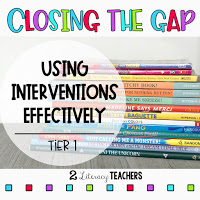
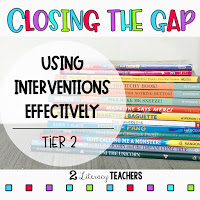
help your students who struggle with reading.
We hope we have done that or have sparked a new idea that you can
use. If there is anything we can help
you with in this endeavor, please feel free to ask. We are all in this together, and we are only
too happy to help in any way that we can.
Click the pictures below to get more specific ideas for when and what to do in your tier 1 and 2 interventions, and we will share with you how we do it at our school.


Smiles,

